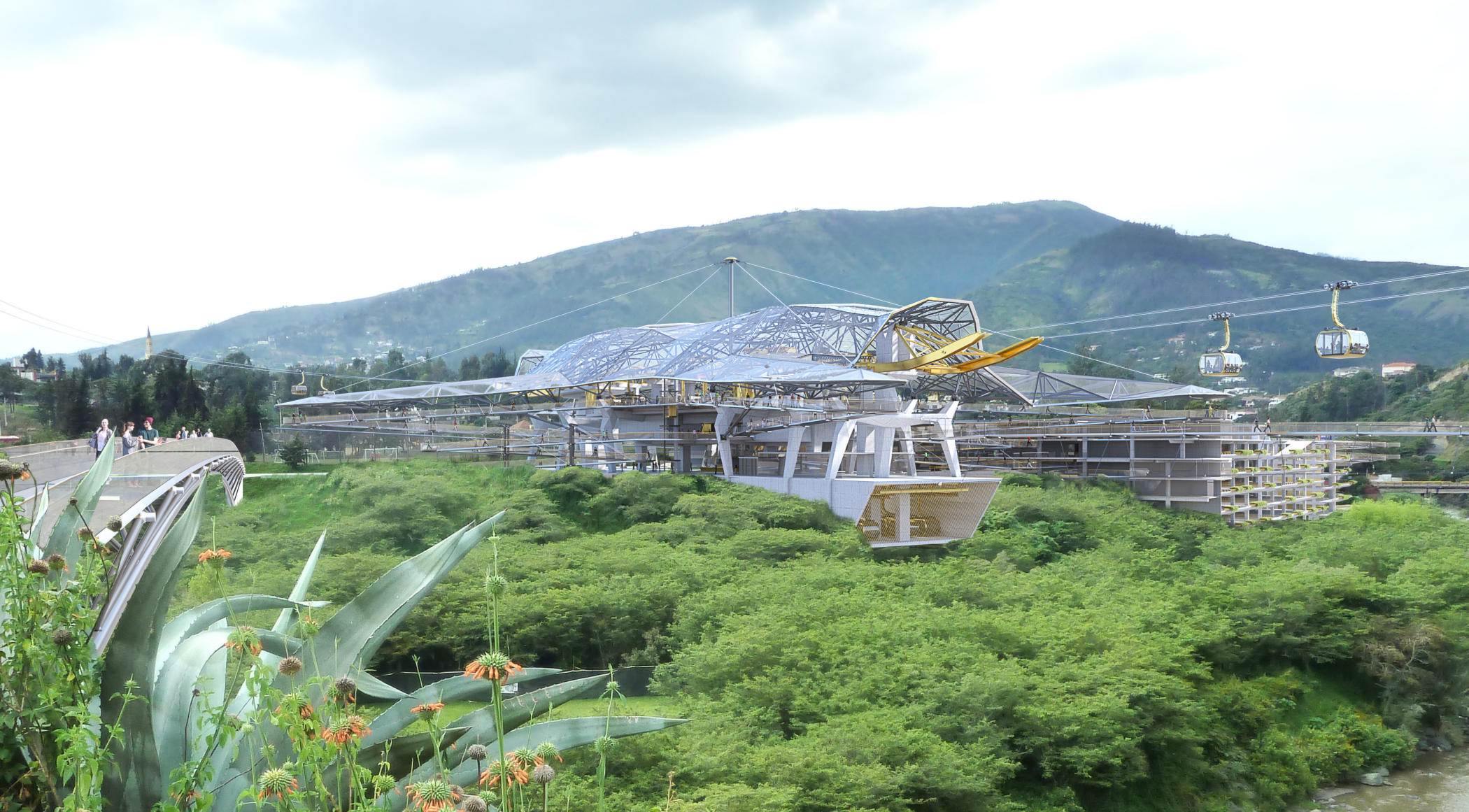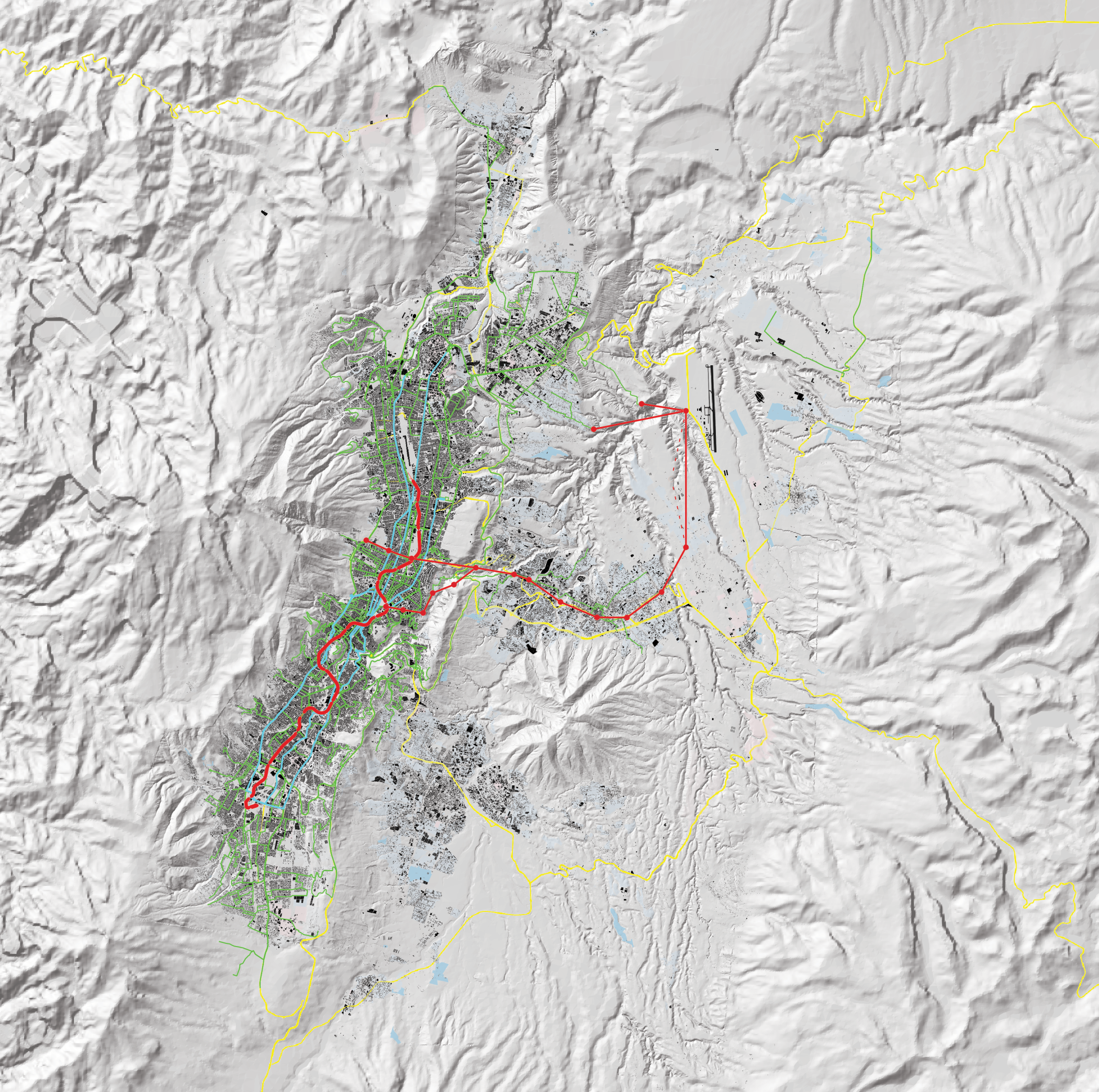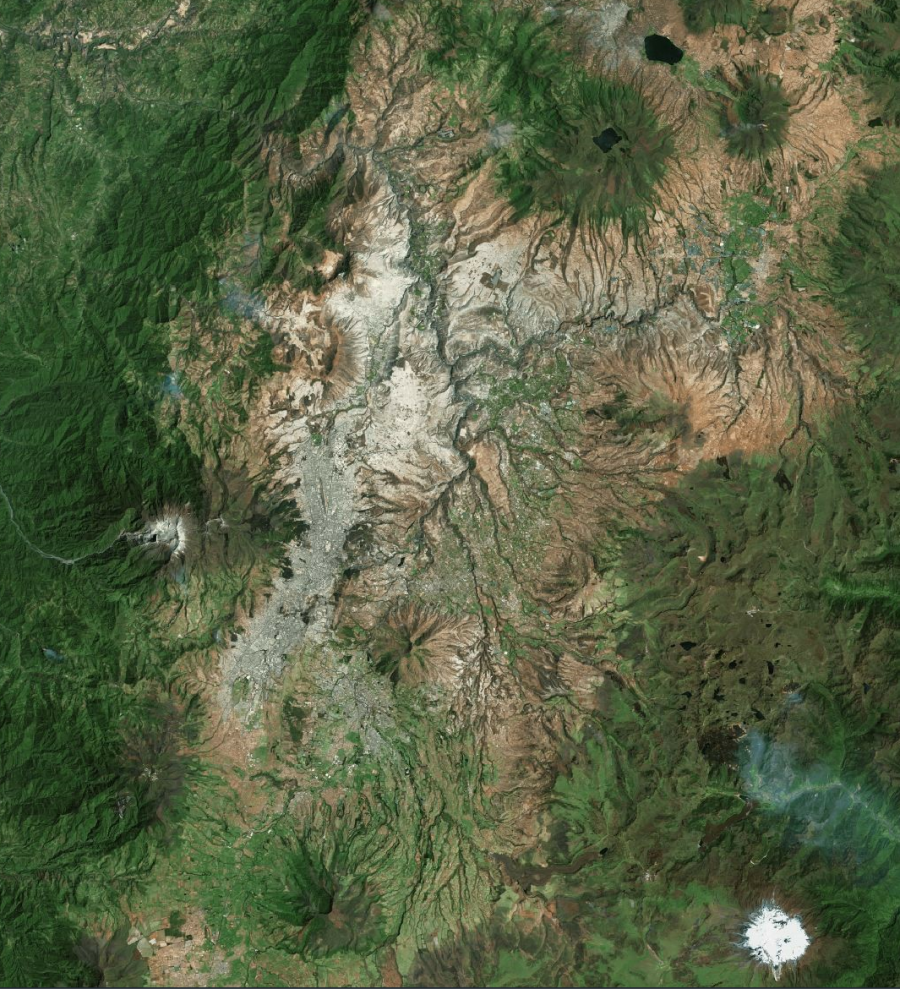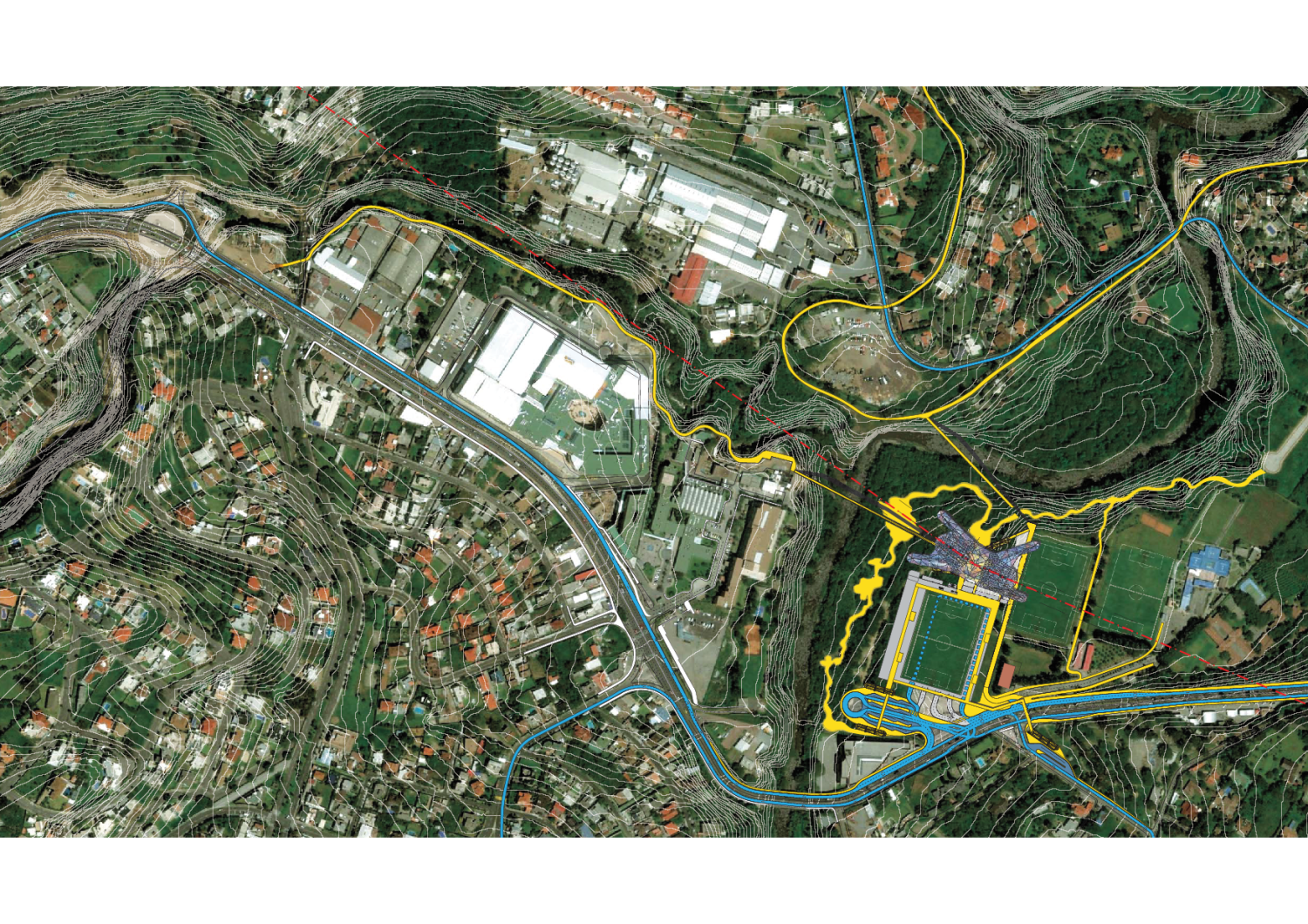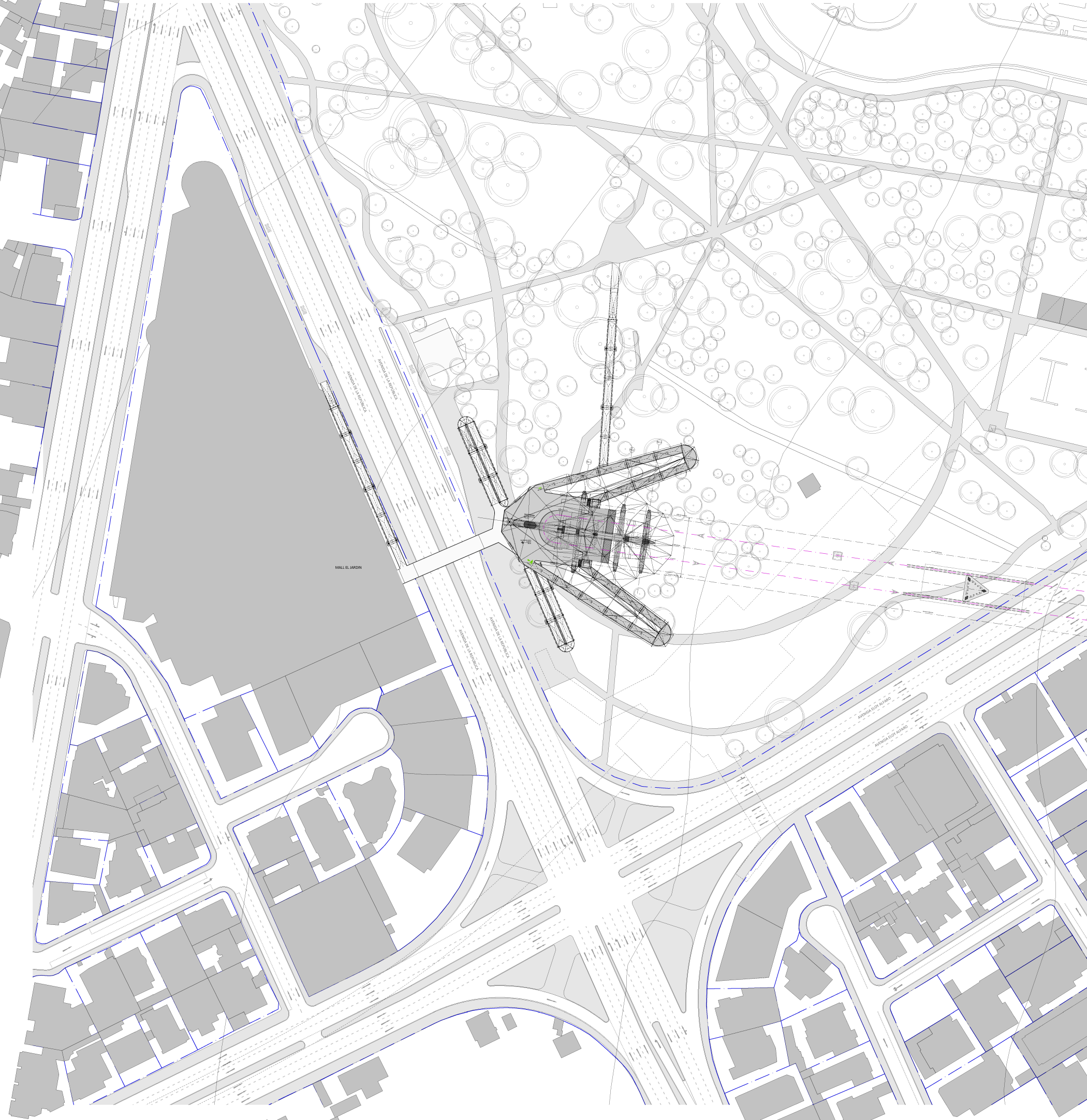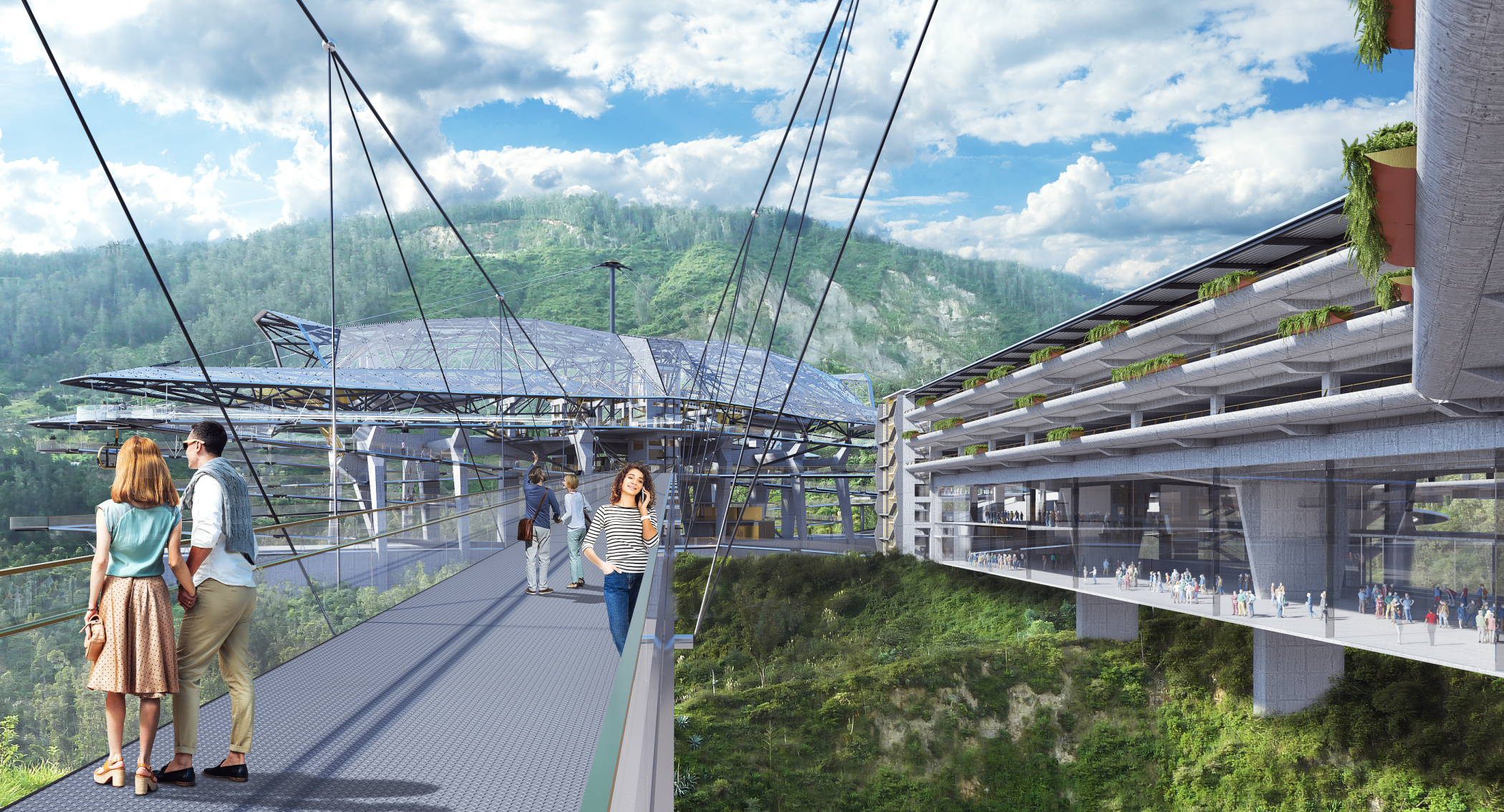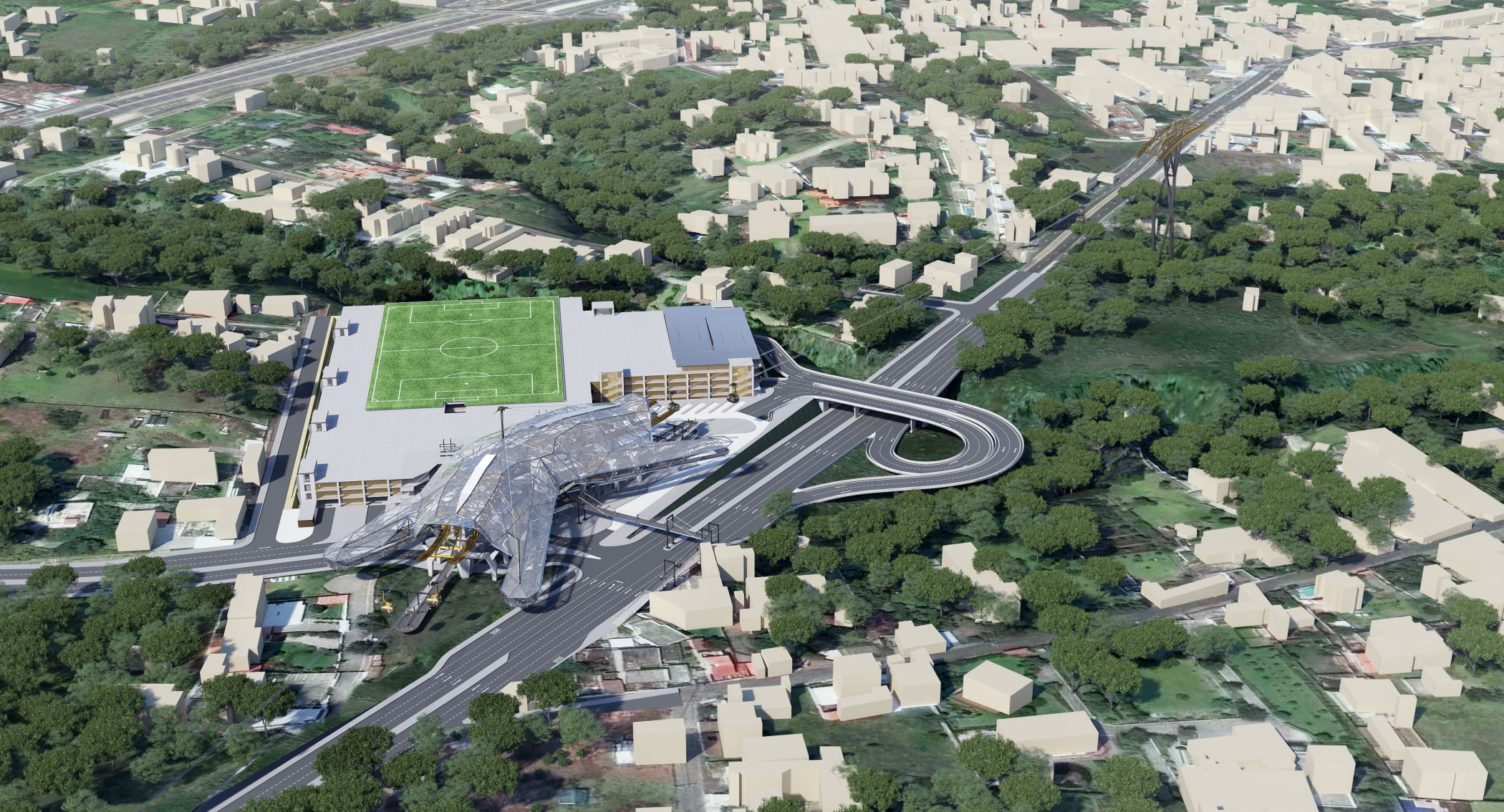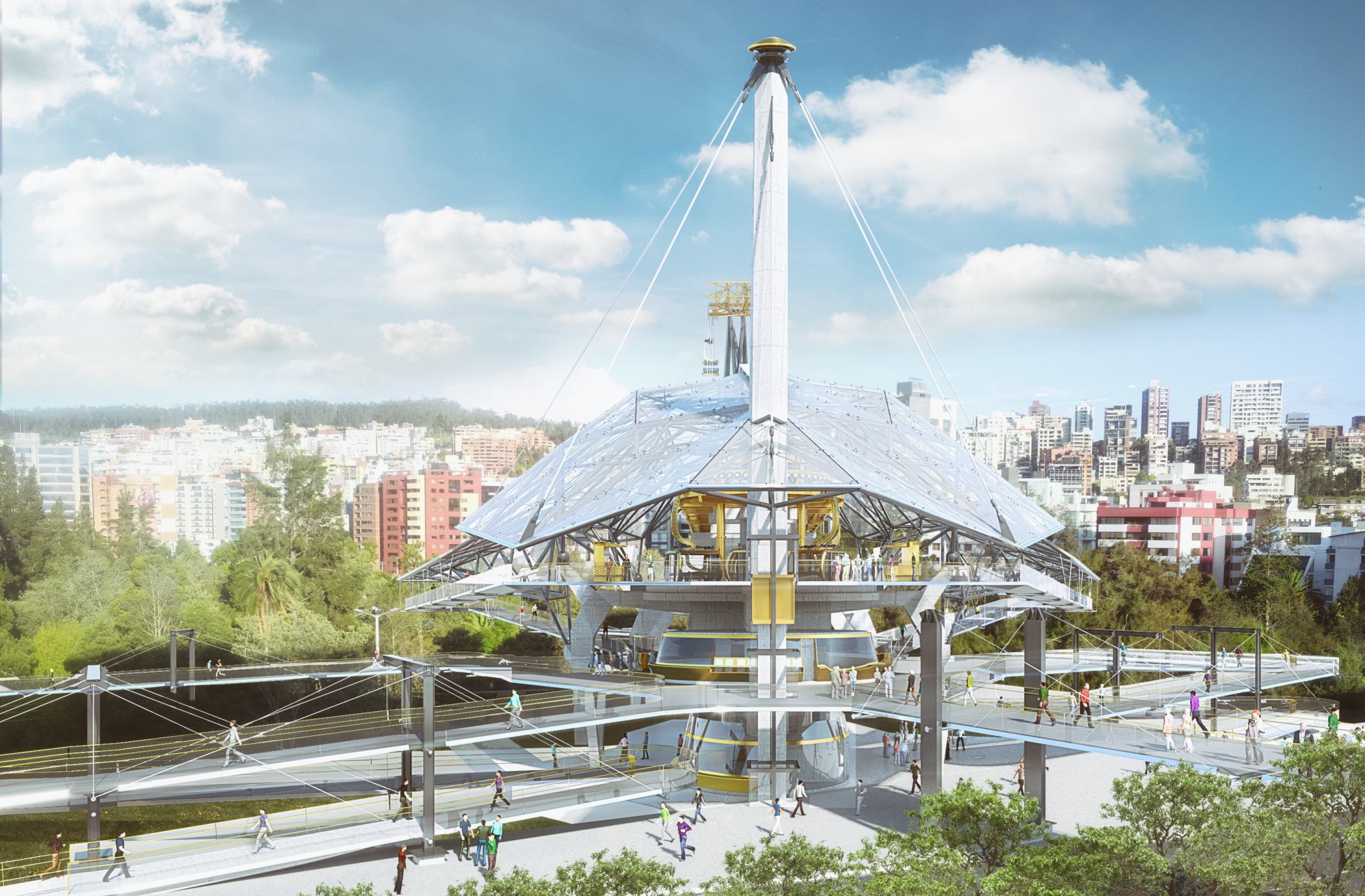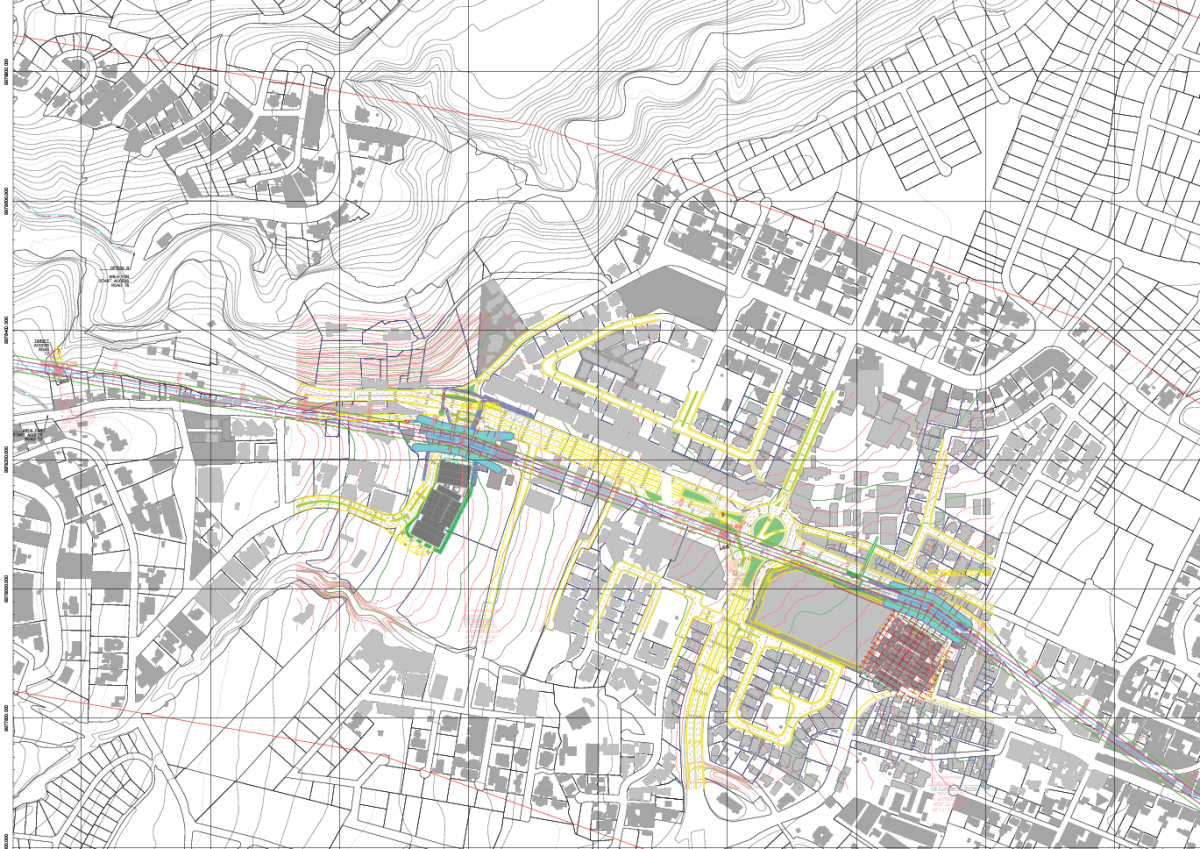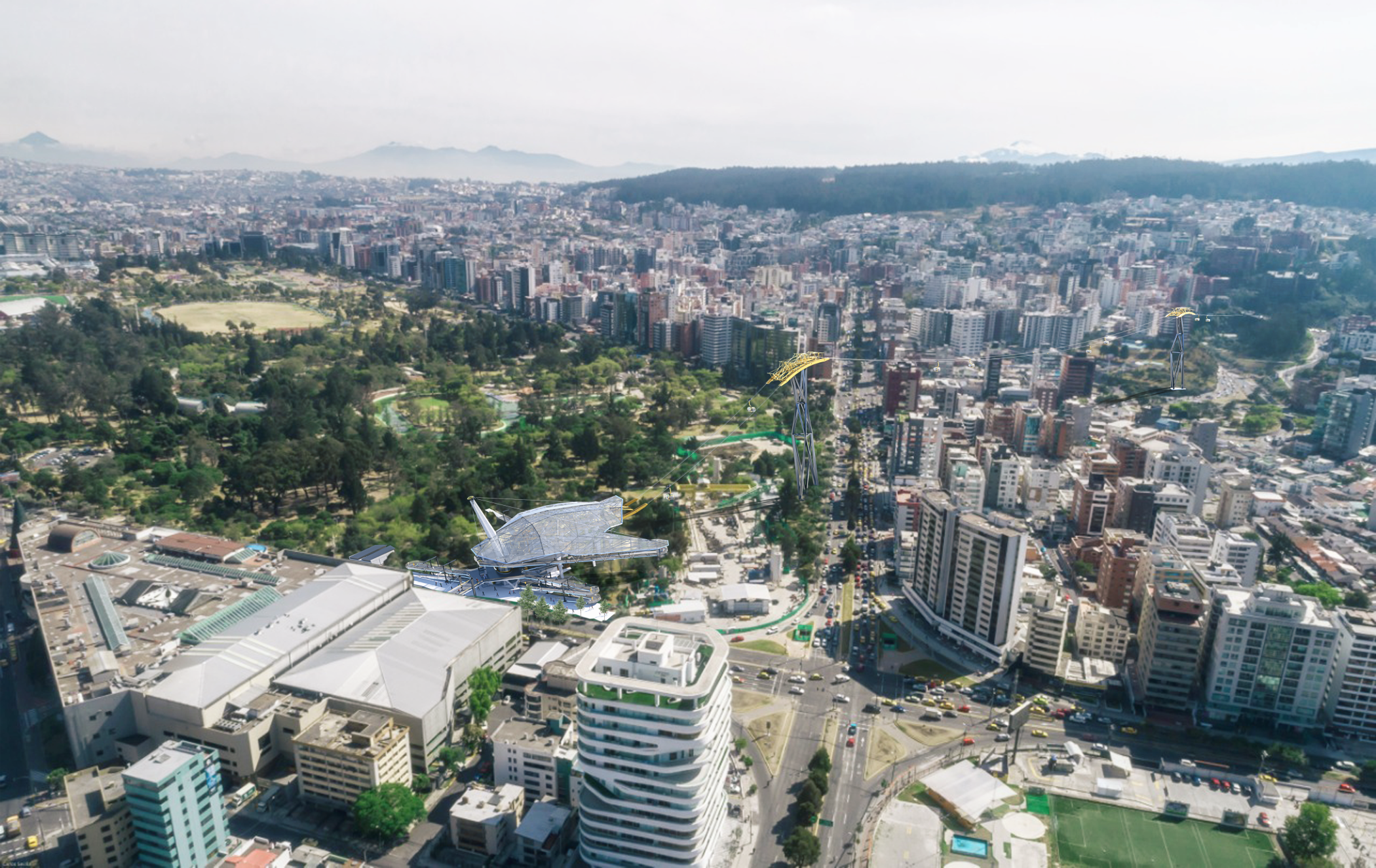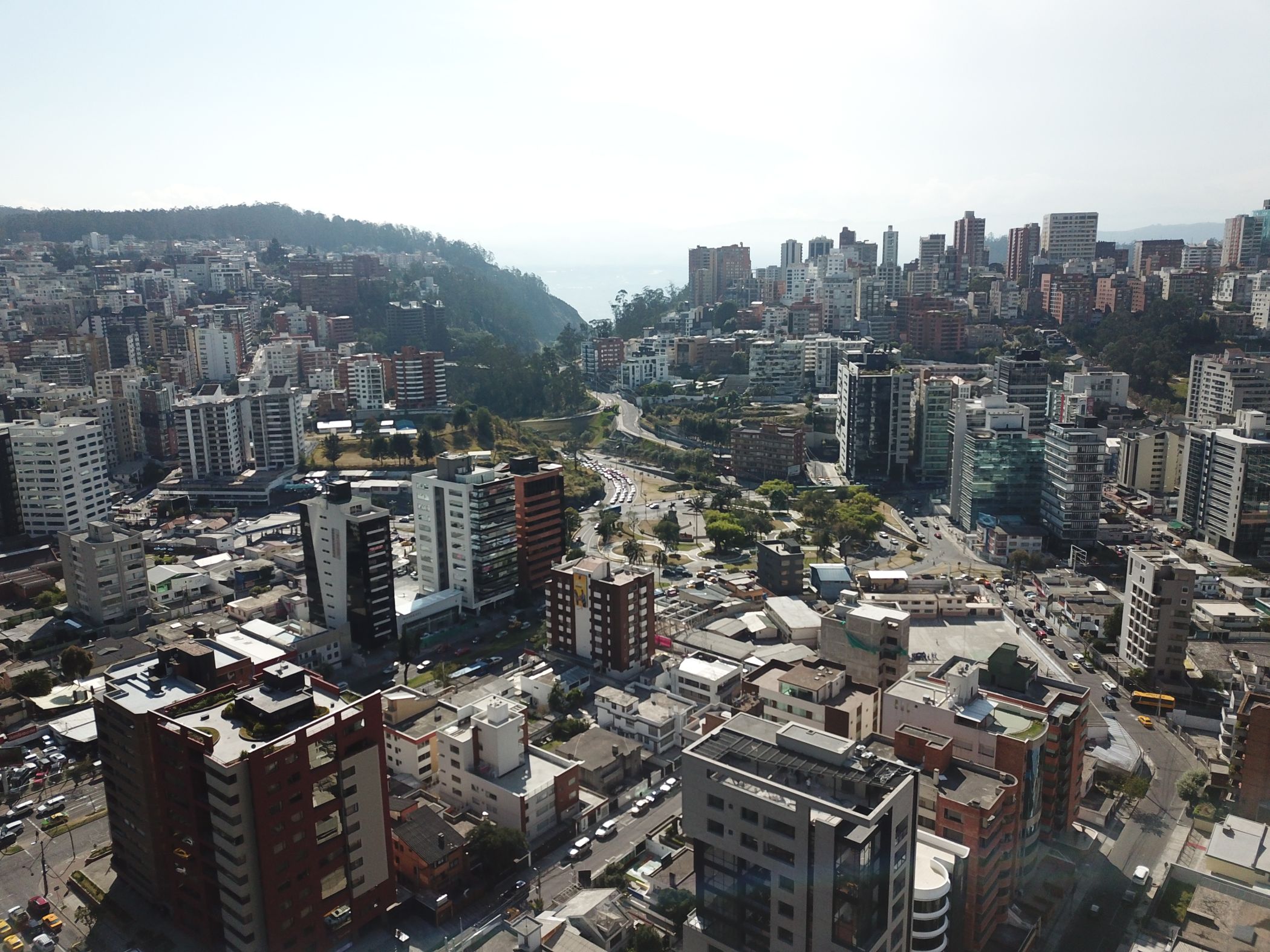Urban Cable Cars
Gallery
Concept
- Initiative
- implement urban mobility, embed sustainably and socially in an urban environment as a public transport system; together with the technical and legal support of Doppelmayr and the local disposition of InOneRide as a local promoter and prime developer of this specific urban cable car system, supported by d*a.
- Architecture
- cable car transport as functional systems in the city give with their stations the respective place an identity, an expression of a footloose/carefree and light mobility and integration, a basis for a social jump that benefits the whole city - MICROINCLUSION
- Technology
- this technology enables among other things the reduction of individual traffic in the city and safes transport for everyone with minimal ecological impact and maximum socio-economic added value
Question
Why a cable car system as an inner city public transport system?
Solution
The implementation of cable car system in urban enviroment is an optimal solution for the fast growing city with a lot of individual traffic load, like Quito - the capitel of Ecuador nearly 9,350 feet above sea level, the second highest capital in the world with around 1.5 million inhabitants, spread over several Andean valleys.
With an public “Urban Aerial Ropeway Transport System” it will be possible to connect several separted districts by passing the valleys in the air.
Metroferico is implemented completely barrier free in the city of Quito. All different modes of passenger transport like pedestrian, bicyclist, car, bus, taxi, metro and all other available transport systems will be fully connected through two lines.
The Line 1 with 7 stations connect the rapidly growing areas in the Tumbaco valley with the hyper centre of Quito and is linked to the Quito Metro. Moreover it forms the basis to connect the international airport with Quito hyper centre via Line 2 with 3 stations.
Because of the implementation into the existing urban network and also by connecting originally separating arterial roads by pedestrian ramps, Metroferico will provide the mobility of everybody in Quito, habitants and guests. The intermodal interventions rise the living quality for all habitants (recreation, pupils can come to school quick and save, reduction of crime, connection of remote districts, etc.), upgrade the socio economic environment by providing attractive locations for further development (space for art projects, social living, restataurant/bars/hotel and so on) and create attractive offers for guests (easy and welcoming arrive in Quito with easy connections to all important districts, breathtaking overview while unsing, new location quality for hotel, sports facilities…).
Moreover the ecological footprint by running a cable car system is the lowest possible compared to all other public transport systems and this system itself is nearly free of emissions and directly without noise; exhaust and particulars. Metroferico causes a massive reduction for motorised public private transport and will subsequently have a positive impact on economic aspects, like reduction for costs for road maintenance, reduction of traffic accidents in public and private transport, reduction of emissions in the air, reduction of stress in transport, savings to the state subsidized fuel.
Design
The Metroferico stations itself are designed in such a way that they are visible from quite a distance - attractive landmarks and important vital interfaces in the urban environment. They work as “spiders” in the urban structure and connect all pedestrian links completely barrier - free with cross over the streets by pedestrian bridges and inclined ramps.
Because of this new connections and the positioning of the stations, the established neighbourhood will be supported optimally. Each station will offer a meeting point and create attractive locations for upcoming activities (social, cultural commercial and sports facilities …), they are remarkable hubs implemented in urban and suburban context to develop the centre and sub centric structures in the City of Quito.
Decentralized scattered localities will be connected to the centre and get the chance to develop their own district centres.
The existing urban structures of Quito get supported and developed because Metroferico provides a sustainable structure for desirable urban functionalities and social movement, which give impetus to the economic growth and also create crucial incentives for future investments.
All required service utilities of the stations like toilets, cash desks, offices, workshops, social rooms, etc. are designed and set up as emission free as possible, trying to achieve a Net Zero building.
Info
| Category | Cable Car, City Planning, Infrastructure/Traffic |
|---|---|
| City | Quito |
| Commissioner | Doppelmayr Seilahnen GmbH / Garaventa AG with InOneRide |
| Period | 2018– |
| Type | direct |
| Status | ongoing |
| Team | InOneRide |
| Technical | Phase I: Phase II: Cable care system: Total number of cabins: Travel speed: Passenger capacity: Max. capacity per hour and day: Utilisation 80%: Total energy consumption per passenger: Total energy consumption per year phase I: Total energy consumption per year phase II: |
| Copyright | driendl*architects ZT GmbH |
Media
- Generate Pdf
- Share Project
